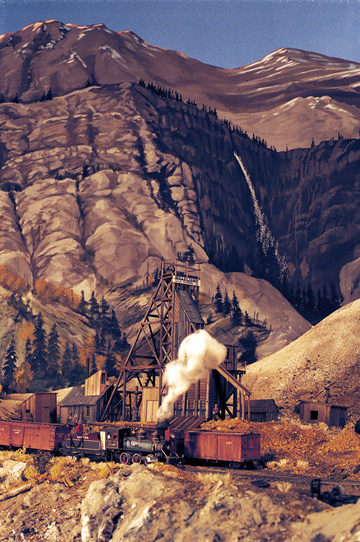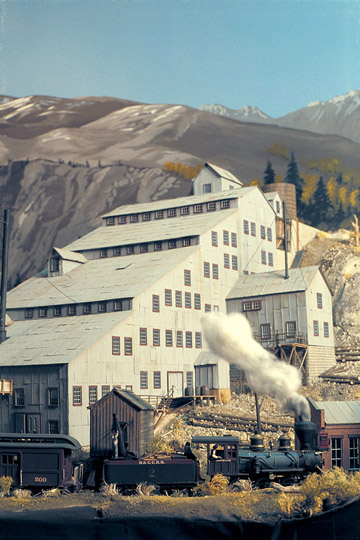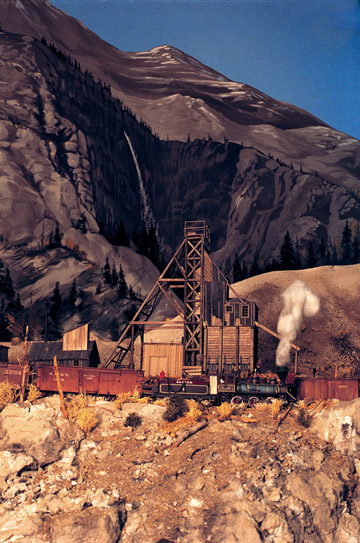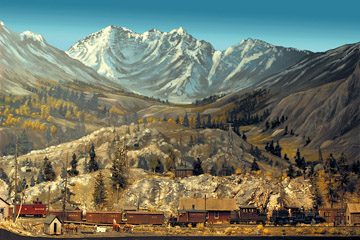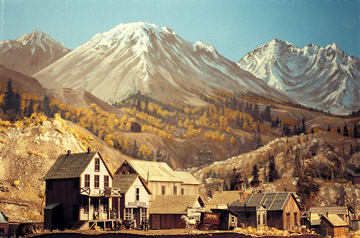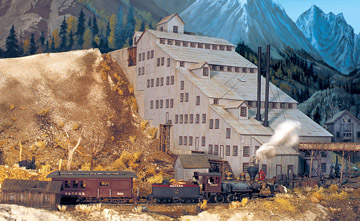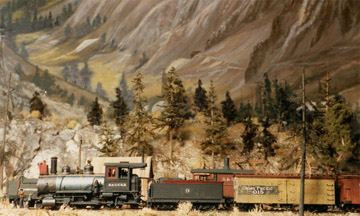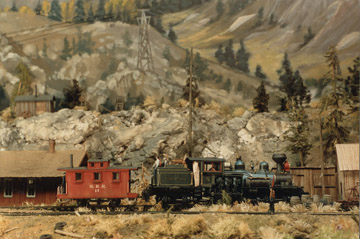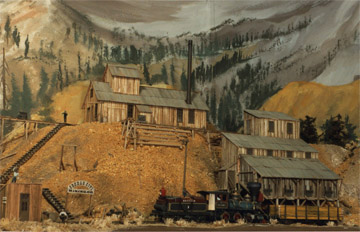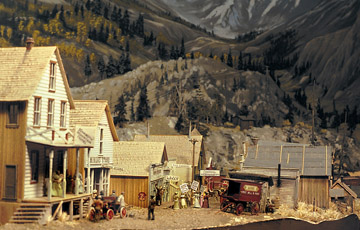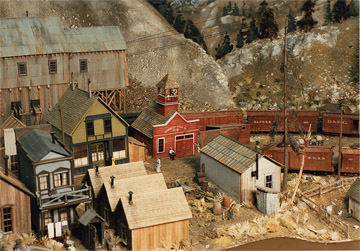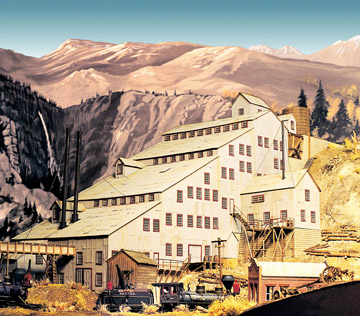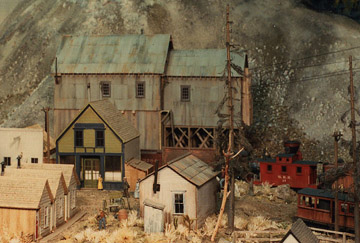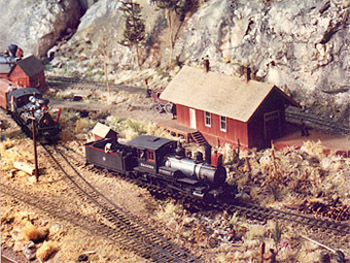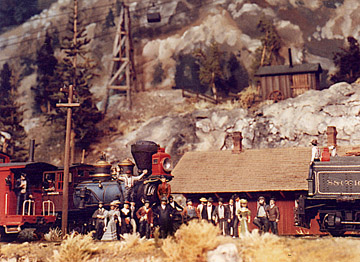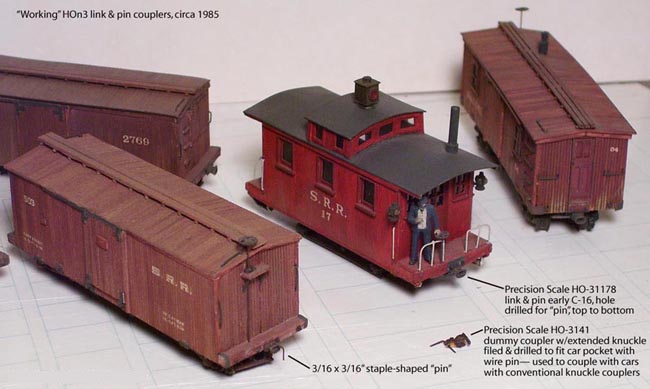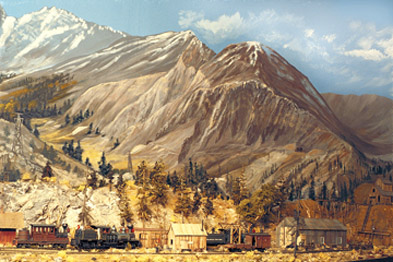
This small adventure provided me with the theme for my free-lance narrow-gauge railroad. A bit of explanation is needed—
Citizen Kane is the greatest of Welles' movies— arguably the greatest and most innovative film made in America. According to the story, penned by Herman Mankiewicz and Welles, millionaire Charles Foster Kane got his start by inheriting a fabulous gold mine near his boyhood home, the village of Little Salem, Colorado. The fortune from the "third-richest gold mine in America", called the Colorado Lode, enabled Kane to go off and become a ruthless newspaper tycoon, just like his real-life counterpart, William Randolph Hearst.
This inspired the following train of thought: if Kane's gold mine was in the mountains of Colorado, Little Salem had to be the eventual destination of a narrow-gauge railroad.
Now picture the scene at the beginning of the 20th century: Kane's Colorado Lode mine is running full steam, and the town of Salem, no longer Little, is the terminus of Kane's own short line narrow-gauge railway connecting it with Colorado's other great gold-mining center, Cripple Creek.
The Salem and Cripple Creek Railroad.
Click pix for enlargements.
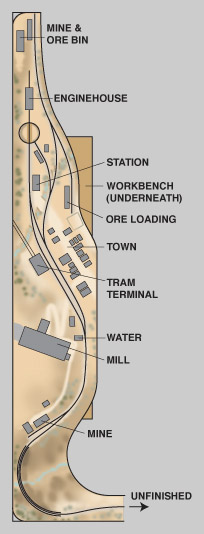
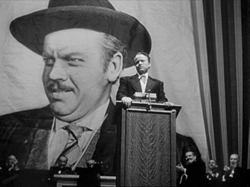
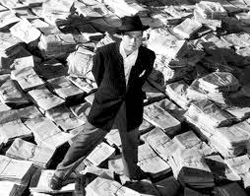
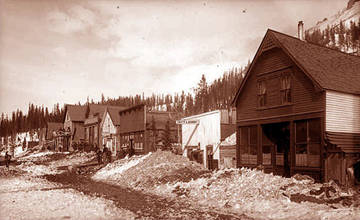
The background scenery was painted directly on the wall. I used three quarts of house paint— white, blue, and something close to umber. I also got out my old acrylics left over from art school. With everything on the layout painted or tinted with the same shades of umber, backgrounds and foregrounds blended well.
For motive power, I had a slightly doctored brass Lambert C&S 2-6-0, a heavily doctored FED generic 2-6-0, an MDC Shay, and 2 MDC 2-8-0s. The MDCs were re-motored and all engines used Tomar track sliders to help with electrical contact. Most of my rolling stock was scratchbuilt and ran on Grandt Line trucks.
Much of the layout was sceniced with a bucket of dirt brought back from the site of Red Mountain Town. The Orphan Girl Mine (above) sits on a foam mound covered with real mine tailings.
I used code 55 flex-track, built my own stub switches, and laid the sidings by hand with code 40 rail. The Kemtron harp switch stands really worked.
The S&CC lasted 8 years, until the 1994 Northridge Earthquake. I lived (and still live) 1 mile from the quake's epicenter. The damage turned out to be too disheartening to attempt repairs. Besides, I was tired of railroading in a Southern Californian non-air-conditioned garage. The buildings and rolling stock were packed up and set aside, where they still wait for some future incarnation of the Colorado narrow gauge scene.


